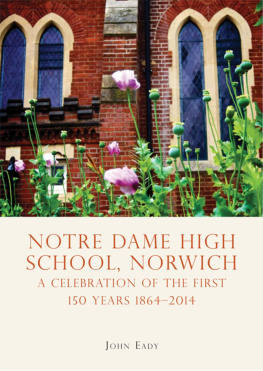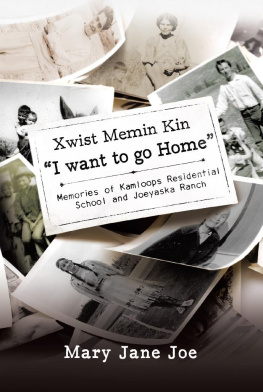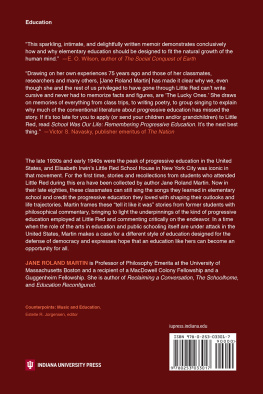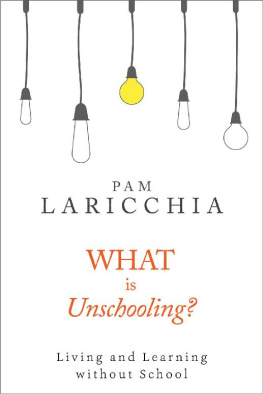Title page
Founding a School in France: LEcole Hampshire
Text and Watercolours
by
Jane Box-Grainger
A Sequel to A Vision Achieved
by
David Lemmon
ARTHUR H. STOCKWELL LTD
Torrs Park Ilfracombe Devon
Established 1898
www.ahstockwell.co.uk
Publisher information
2014 digital version by Andrews UK Limited
www.andrewsuk.com
Jane Box-Grainger, 2010
First published in Great Britain, 2010
All rights reserved.
No part of this publication may be reproduced or transmitted in any form or by any means, electronic or mechanical, including photocopy, recording, or any information storage and retrieval system, without permission in writing from the copyright holder.
Arthur H. Stockwell Ltd bears no responsibility for the accuracy of information recorded in this book.
Every effort has been made to obtain the necessary permission with reference to copyright material, both illustrative and quoted. We apologise for any omissions in this respect and will be pleased to make the appropriate acknowledgements in any future edition.
Dedication
To my children, Eve, Paul and Jill, and to my sisters and brother, Ann, Susan and John.
Glossary
Bastide | Fortified town |
Bloc en calcaire | Made of limestone |
Borie | Ancient Shepherds hut |
Bulletin de paie | Payslip |
Bureau de Beaux Arts | Group overseeing and protecting historical buildings |
Chemin rural | Lane |
Commune | Group (in this case, villagers) |
Commune land | Land owned by the village |
Conseils | Equivalent of local councillors |
Contrat de dure limite | Contract of employment with starting and ending dates |
Convention | Agreement in writing |
Cour | Courtyard |
Crpissage | Roughcast covering original stone |
Direction Gnrale des Impts | Tax authority |
Domaine | Estate |
Ecole primaire | Primary school |
Femme de mnage | Housekeeper |
Four | Oven (bakehouse oven) |
Gabare | Flat-bottomed boat on the Dordogne |
Grant | Managing director of a company |
Grange | Barn |
Htels-des-particuliers | Private mansions (Sarlat) |
La France Profonde | Remote French countryside |
Lauzes | Crafted limestone tiles |
Maire | Mayor |
Mairie | Mayors office |
Matre doeuvres | Foreman of works |
Mas | Farmhouse |
Notaire | Solicitor |
Pierres jaunes | Yellow limestone bricks |
Pigeonnier | Pigeon loft |
Place | Square (village square) |
Pompe Oxyfor | Sewage pump |
Porcherie | Pigsty |
Poste | Post for electricity or phone wires |
Poutres | Roof beams |
Remparts | Town/city walls |
Rez-de-chausse | Ground floor |
SA | Public company |
Salle de classe | Classroom |
Salle des ftes | Village hall |
Salon | Sitting room |
Sarl | Limited company |
Squelettes | Skeletons |
Sud Ouest | Local newspaper |
Trimestral | Quarterly |
Tuiles plats brunes | Flat brown tiles |
TVA | VAT |
1: Founding a School in France
This chronicle is the story of an educational project from its conception to its successful conclusion. It was to prepare pupils to take their place eventually in the newly formed European Union by giving them greater exposure to a foreign language than the curriculum would normally allow. The language selected was French because the pupils already had a grounding in French in their London school, The Hampshire School, Knightsbridge, a well-respected and successful preparatory operation. In order to create a sister school in France, it was essential to find some suitable premises as its base. The search to find a suitable and practical venue in France is the first stage of this story. The second stage was to turn the selected Grade II listed buildings into an attractive and practical site. The final stage was to implement the syllabus. All these stages were time-consuming, and, in some cases, costly. It is extremely gratifying to me as the instigator and author of this book that they have finally proved to be successful. I still find it amazing that what, at times appeared to be insurmountable difficulties were overcome, and that the project succeeded.
If I reveal a few brief details about the history of The Hampshire School in Knightsbridge, it may help the reader both to enjoy and understand this story.
The founder, my mother, June Hampshire, started a school in the drawing room of her home in Surrey in 1928, to teach dancing. June suffered from post-natal depression after the birth of her second daughter, Ann. Junes doctor asked her what she would like to do. Her reply was Dance! She had been a ballet dancer before her marriage, so it seemed logical to use the large drawing room in Oakgates, her house in Surrey, as a starting point for teaching a few pupils. The room had parquet flooring and enough space once the furniture had been pushed to the sides of the room. It was called the Jane Ann School of Dancing after her two eldest daughters, Jane and Ann. She taught ballroom, tap, ballet and general dancing. It was so successful that many pupils joined the classes and she had to rent two extra spaces, Cheam Hall and the ballroom of the Drift Bridge Hotel in Epsom. Then later, in 1935, she also opened an attractive studio in Epsom High Street. Throughout the period from 1928 to 1939, Junes pupils gave regular concerts and recitals to help to raise money for local worthy causes. Jane and Ann were a regular feature in the concerts, where they danced special duets choreographed by their mother. In 1932, June rented a studio in Knightsbridge, the London Ballet School, while in Surrey the school continued under its original name. With the opening of the London Ballet School, June expanded the curriculum to include tuition on elocution, music and dramatic art. The new curriculum also included courses in shorthand, typing and French for senior pupils, as well as professional training for the stage. All activities stopped in both schools in 1939, due to the commencement of World War II.
On Junes return to London, after three years serving in the WRAAF, the school in Knightsbridge reopened. It incorporated general education with dancing, and Junes youngest daughter, Susan, became one of the first six pupils.
In 1943, a flying bomb fell in a field adjoining Oakgates. The blast blew out most of the windows and doors. As no one was living in the house it provided a field day for looters, who practically emptied the house of all its contents. My father, Junes husband, was very tardy in taking action and so he sold the lovely property very cheaply what a pity! So from that time there was no longer a school in Surrey owned by my mother.
Next page











